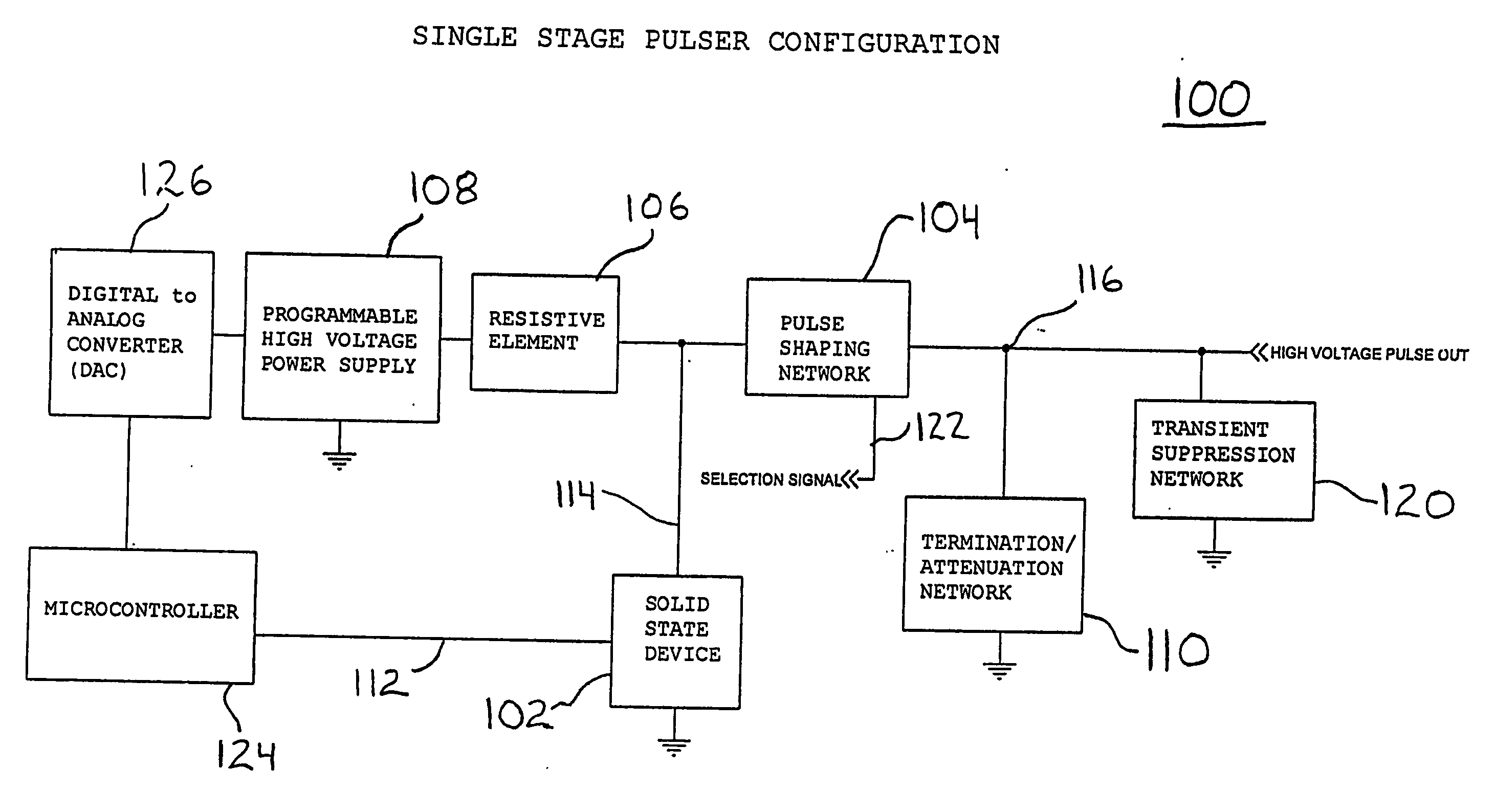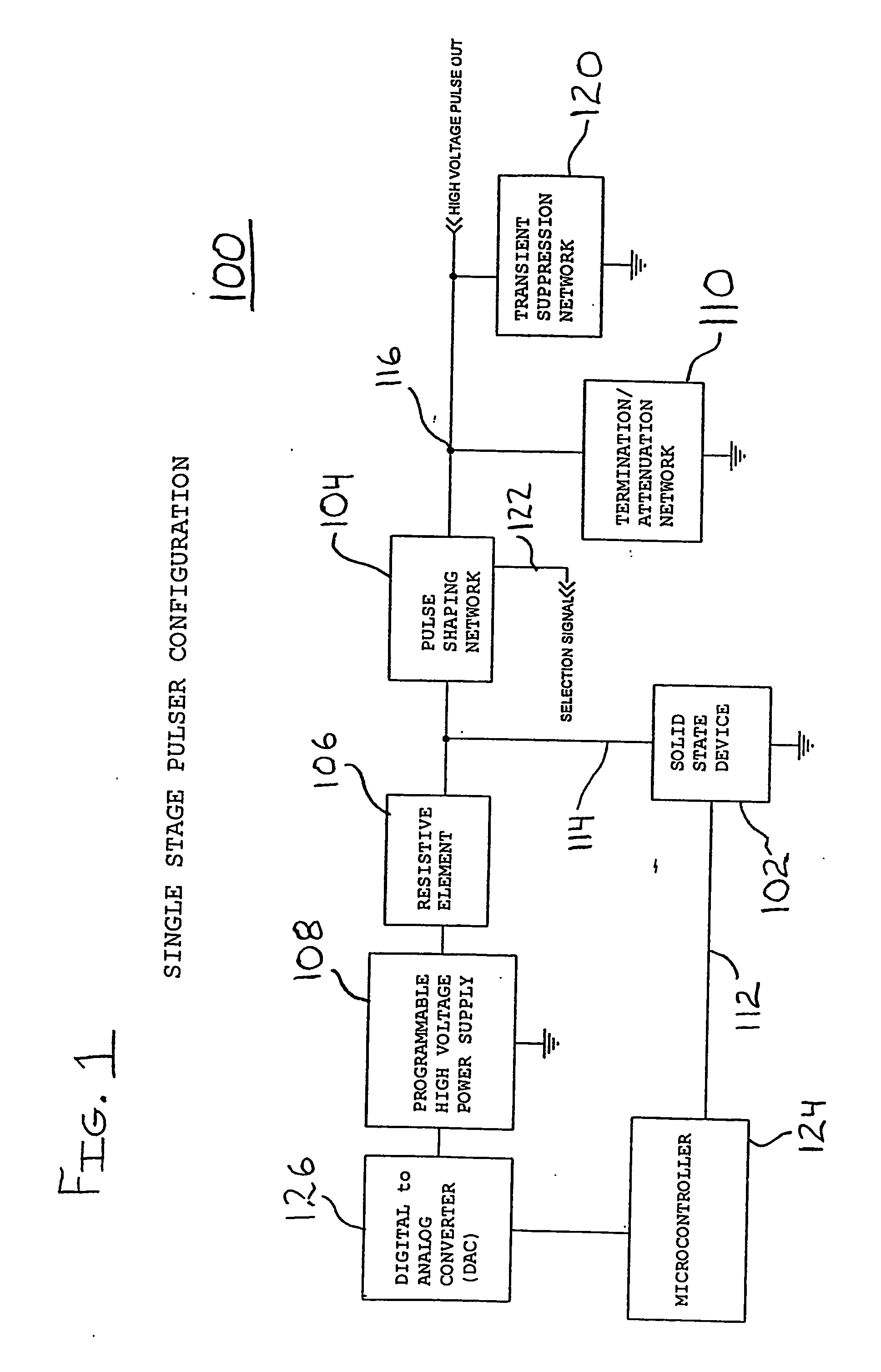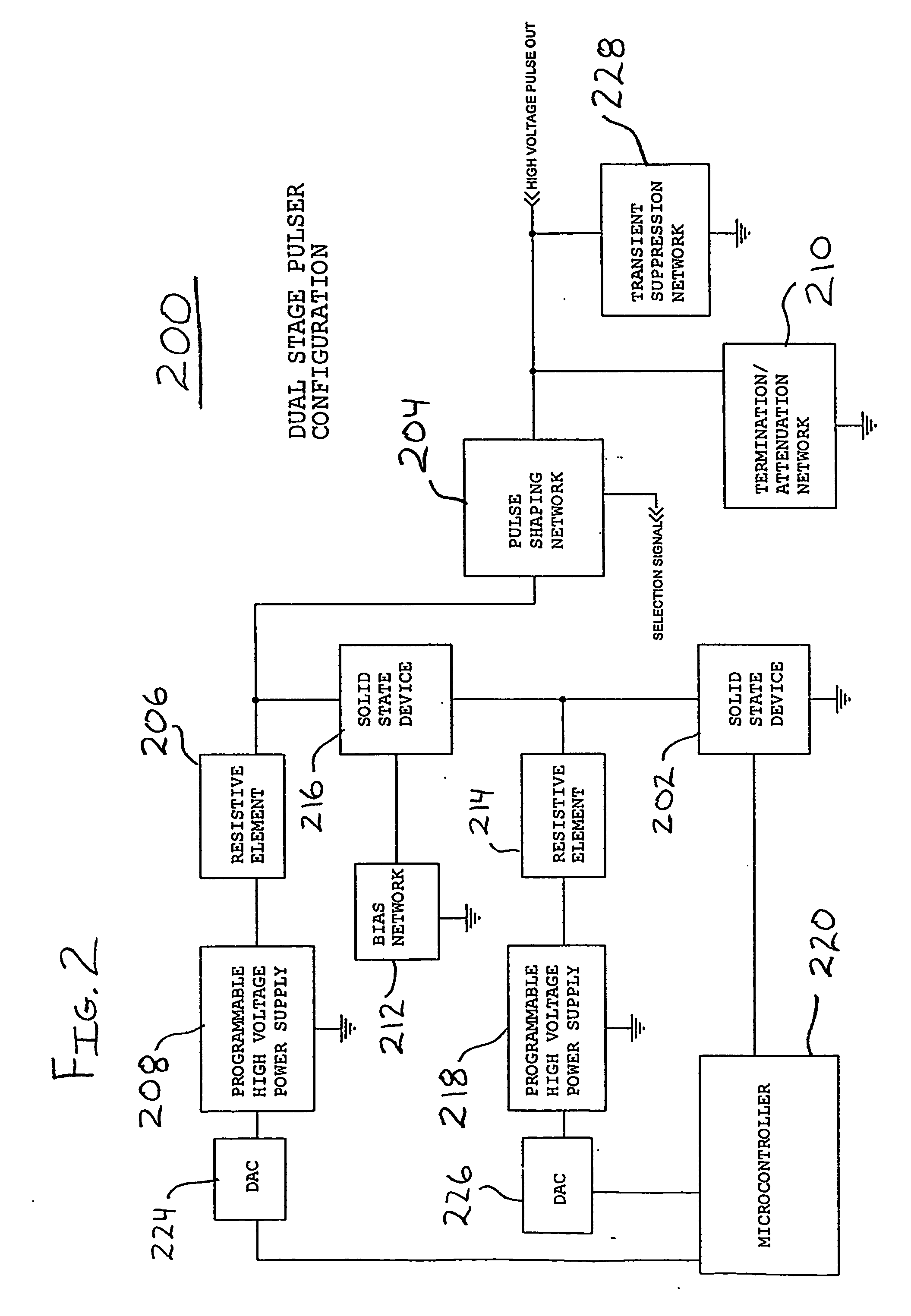Short duration variable amplitude high voltage pulse generator
a variable amplitude, short-duration technology, applied in pulse train generators, pulse techniques, instruments, etc., can solve the problems of non-solid-state techniques suffering from the disadvantage of non-uniform pulse amplitude, data noise, and measurement quality degradation, and achieve high repetition rate, wide range of use, and great accuracy
- Summary
- Abstract
- Description
- Claims
- Application Information
AI Technical Summary
Benefits of technology
Problems solved by technology
Method used
Image
Examples
Embodiment Construction
[0024]FIG. 1 is a block diagram of one version of a single stage pulser configuration having an RC network. A solid-state device 102 is provided with an input labeled “trigger input”) on line / node 112 and an output on line / node 114 connected to the shaping network 104 and a resistive element 106. Resistive element 106 is connected to a programmable high voltage power supply 108. The reference of the solid state device 102 is connected to ground.
[0025] Solid-state device 102 functions as a very fast high voltage switch. When the solid-state device is not saturated, node 114 is charged by the high voltage power supply 108. When a trigger input—which can come from a signal generator, a software controlled gate, or another source—is applied on line / node 112, the solid-state device 102 conducts current and line / node 114 shorts to ground. Heat generated by the circuit may be dissipated through conventional circuit cooling methods.
[0026] The high voltage power supply 108 is programmed by...
PUM
 Login to View More
Login to View More Abstract
Description
Claims
Application Information
 Login to View More
Login to View More - R&D
- Intellectual Property
- Life Sciences
- Materials
- Tech Scout
- Unparalleled Data Quality
- Higher Quality Content
- 60% Fewer Hallucinations
Browse by: Latest US Patents, China's latest patents, Technical Efficacy Thesaurus, Application Domain, Technology Topic, Popular Technical Reports.
© 2025 PatSnap. All rights reserved.Legal|Privacy policy|Modern Slavery Act Transparency Statement|Sitemap|About US| Contact US: help@patsnap.com



